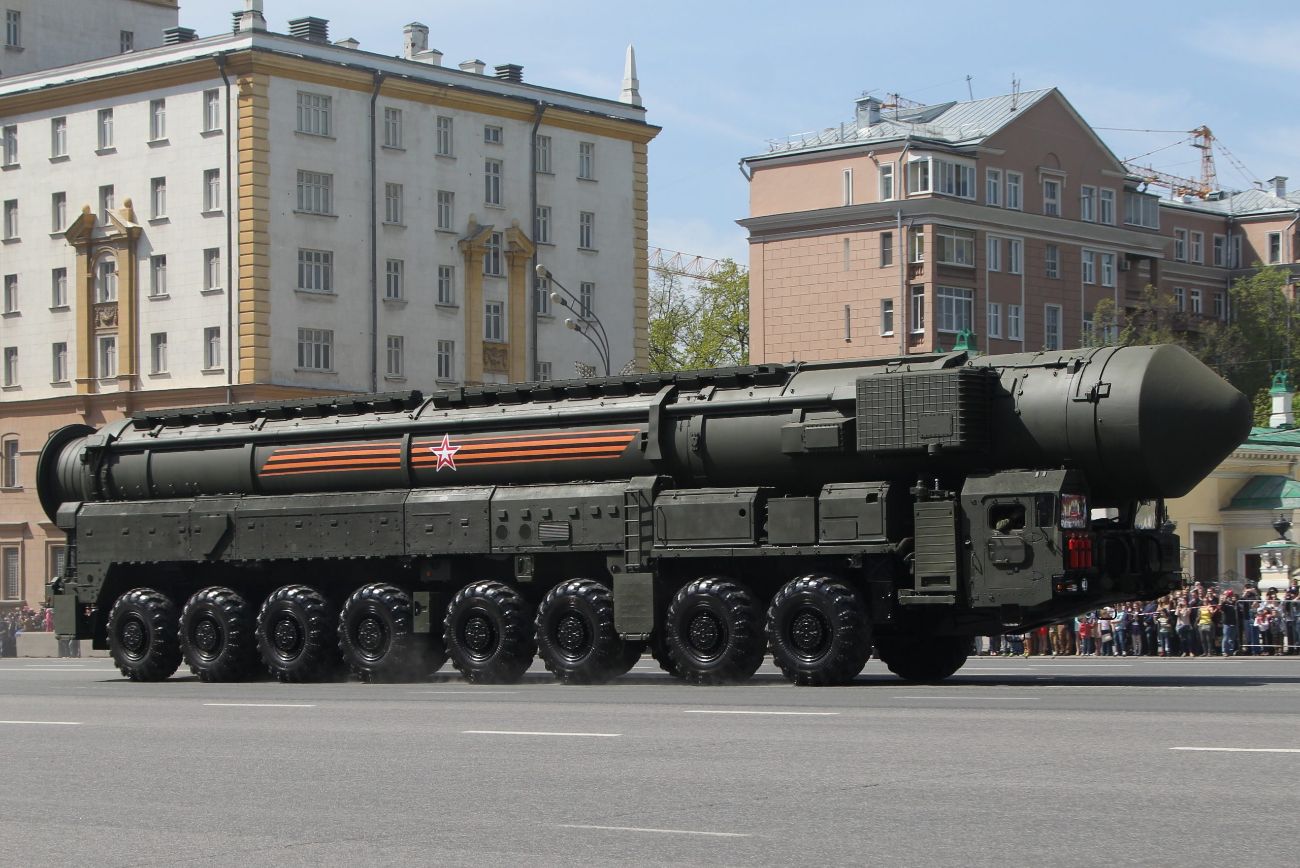A senior Russian military official has revealed that Moscow is actively developing capabilities to undermine the effectiveness of advanced US air defense systems.
Colonel General Sergey Karakayev, the Russian Strategic Missile Forces commander, has outlined proposed technical measures aimed at reducing “the efficiency of the prospective US missile defense system.”
1st Batch Of Leopard 2 Tanks Damaged By Russia & Repaired By Lithuania Ready To Return To The Frontlines In Ukraine
In an interview with Russian media ahead of Strategic Missile Forces Day on December 17, Karakayev emphasized this progress and mentioned that they are utilizing military-technical measures to attain this goal.
These measures focus on developing advanced missile systems with cutting-edge technology penetrating missile defenses. The initiative considers anticipated specifications of forthcoming missile defense surveillance and interception systems.
Karakayev underscored plans to advance scientific and technical expertise in cloaking and reducing the visibility of missiles and warheads.
Additionally, he said that the efforts will be directed towards varying the trajectory and ballistic capabilities of Intercontinental Ballistic Missiles (ICBMs) and their combat equipment.
Moreover, ongoing work will also prioritize the development of systems designed to inflict fire and functional damage on the evolving missile defense system’s information, intelligence, control, and strike capabilities.
Moscow did not explicitly refer to the specific names of US air defense systems. However, military systems like Ground-Based Midcourse Defense (GMD), Terminal High Altitude Area Defense (THAAD), and Patriot Advanced Capability (PAC-3) are specifically designed and developed by the United States to offer defense against a range of ballistic missile threats, including potential threats originating from Russia.
Meanwhile, the Commander has also claimed that the United States is poised to persist in endeavors aimed at diminishing the capabilities of Russia’s strategic nuclear forces.
“We now can state with confidence that the US in the foreseeable future will not give up attempts to reduce the capabilities of Russia’s strategic nuclear forces and will continue to explore and implement new additional ways to accomplish this goal,” he said.
Russian Strategic Missile Forces Fully Prepared
General Sergey Karakayev affirmed that the Russian Strategic Missile Forces are fully prepared to execute their missions. The Strategic Missile Forces are crucial to Russia’s strategic nuclear forces.
Their historical roots extend back to December 17, 1959, when the Soviet Council of Ministers issued a decree formally instituting the position of commander-in-chief of the Missile Forces.
This directive led to the establishment of the Main Staff of the Strategic Missile Forces and various other military administration bodies.
Karakayev highlighted the elevated preparedness of the missile forces and underscored the growing capabilities of armaments, military, and specialized equipment.
He added that the control system for troops and weapons has consistently demonstrated reliability, and a continuous combat duty regime has been instituted.
Highlighting the Strategic Missile Forces as the primary component of Russia’s strategic nuclear forces, Karakayev pointed out that they are equipped with robust strategic missile systems boasting unique combat characteristics.

He expressed the belief that the Strategic Missile Forces will continue to play a crucial role in ensuring the country’s security until nuclear weapons lose their deterrent role due to scientific and technological progress or shifts in international relations.
Besides that, the Russian Strategic Missile Forces commander also disclosed a notable increase in the share of new-generation missile systems, reaching 88% due to recent deliveries.
In 2023, the Strategic Missile Forces received approximately 80 new weapons and military equipment as part of government defense contracts.
This facilitated the successful upgrade of three missile regiments with Yars and Avangard missile systems, which resulted in the current 88% proportion of advanced missile systems within the Strategic Missile Forces battlegroup.
Karakayev highlighted that executing planned measures for the Strategic Missile Forces’ upgrade has led to a greater prevalence of cutting-edge strategic missile systems.
This, in turn, has augmented the capabilities of the battlegroup, enhancing its ability to fulfill the crucial mission of nuclear deterrence.
Karakayev underscored the pivotal role of the Strategic Missile Forces within Russia’s strategic triad, highlighting their status as the segment with the highest number of missile delivery vehicles.
He stated that they now secure Russia’s safety by possessing the requisite quantity, potency, and capabilities of warheads and systems for penetrating missile defenses.
- Contact the author at ashishmichel(at)gmail.com
- Follow EurAsian Times on Google News